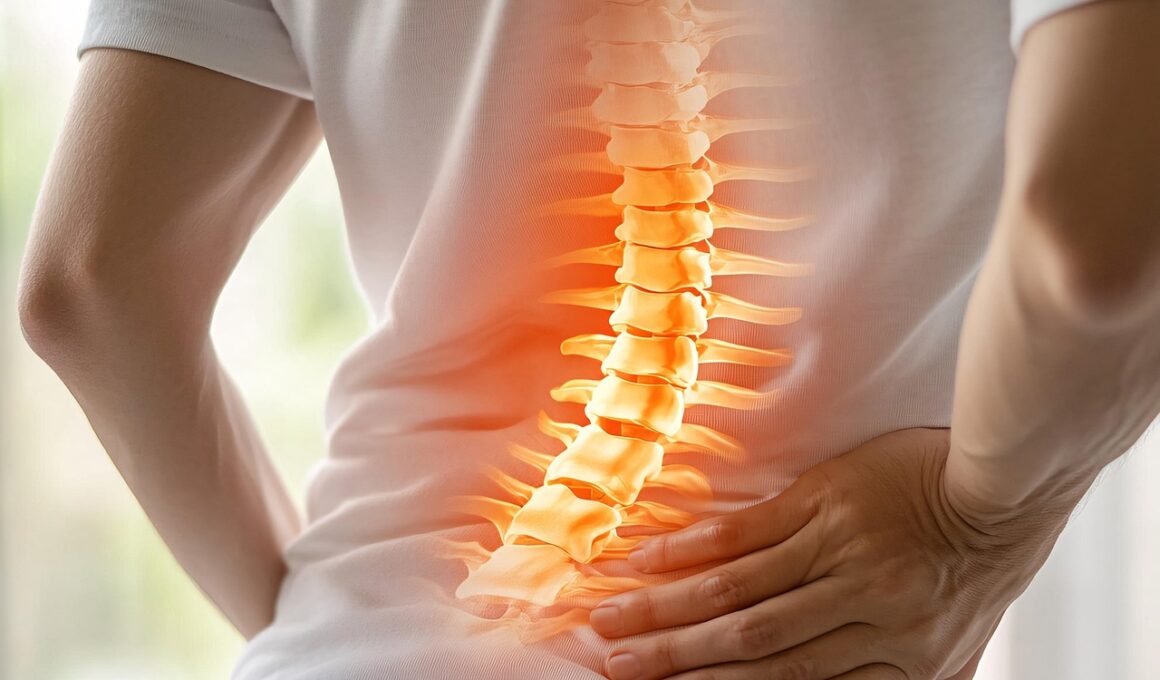Pilates vs Other Exercises for Spine Care
Pilates is widely recognized for its effectiveness in promoting spine health. It involves controlled movements that enhance body awareness and improves core stability. Unlike many high-impact exercises, Pilates offers low-impact alternatives suitable for individuals with back issues. The focus on alignment and breathing engages the core muscles, which are essential for providing support to the spine. One significant advantage of Pilates is its emphasis on functional movement patterns, translating these principles into everyday activities. This method not only strengthens the back but also enhances flexibility, thus preventing injuries. Furthermore, Pilates exercises can be modified to cater to varying skill levels and physical conditions. For individuals recovering from spinal injuries or surgeries, courses led by a certified Pilates instructor can be particularly beneficial, ensuring that the movements are tailored and safe. Many practitioners report experiencing a noticeable decrease in back pain and improved posture after consistent Pilates practice. In summary, Pilates stands out among exercise modalities, especially for those focused on achieving and maintaining spine health.
Comparative analysis with other exercise forms reveals crucial insights into spine care. Traditional strength training often emphasizes heavier weights and compound movements that may strain the back if not performed correctly. While beneficial for overall body conditioning, such exercises may not focus adequately on core stability and postural alignment, which are vital for spinal health. Conversely, yoga also promotes flexibility and strength, yet it can sometimes be challenging for beginners to achieve proper form. Additionally, certain yoga poses may not adequately address back issues for every individual due to various requirements for balance and prior experience. In contrast, Pilates provides a more structured approach to core engagement and postural training for rehabilitation of the spine. It encompasses a wide variety of movements that target specific muscle groups while respecting the spine’s neutral alignment. The systematic approach to movement in Pilates reduces the risk of injury associated with other fitness regimes. Therefore, when comparing Pilates to traditional strength training and yoga, Pilates appears to hold a unique position for those prioritizing spine care and overall health.
The specificity of Pilates exercises catered to spinal health is one of its most significant strengths. Exercises like the “Spine Stretch” and “The Saw” are designed to enhance spinal mobility while promoting core strength and balance. These movements focus on elongating the spine while encouraging proper alignment. Indeed, this approach helps alleviate tension in the back, improving not only posture but also mobility. Recent studies corroborate Pilates efficacy in reducing chronic back pain, showing improved function and pain levels post-consistent engagement in sessions. Additionally, exercises that involve rotation, like the “Mermaid” or “Torso Twist,” highlight the dynamic capabilities of the spine and relieve muscle tension. Incorporating breathing techniques fosters relaxation and deeper engagement with the muscles, maximizing the effectiveness of each movement. This awareness of breath in conjunction with movement makes Pilates distinct from many other forms of exercise. The holistic approach of Pilates, combining strength, flexibility, and mindfulness, provides a comprehensive routine that supports spine health. Thus, as research supports its benefits, Pilates remains an invaluable practice for individuals focusing on spine care needs.
Another aspect where Pilates excels is its adaptability for different populations. From elite athletes to pregnant women or older adults, Pilates serves a wide demographic. This accessibility ensures that spine health can be prioritized regardless of individual physical capabilities or experience levels. Notably, Pilates studios typically offer beginner through advanced classes, emphasizing progressive training that respects the body’s variations. Many physical therapists recommend Pilates as part of rehabilitation for patients with specific back problems due to its low-impact nature and focus on alignment. Furthermore, a certified instructor monitors movements, ensuring they adhere to safe practices. In essence, the tailored approach to each individual’s mastery level is crucial for those navigating recovery or seeking preventive strategies for spine health. Modifications may be applied to facilitate all practitioners while safeguarding against potential injuries. The supportive environment of Pilates classes provides encouragement that bolsters participants’ confidence and motivation. Ultimately, Pilates represents a comprehensive solution for people facing diverse spine-related concerns, enabling them to strengthen and nurture their back effectively.
Benefits of Regular Pilates Practice
Consistency in Pilates practice yields numerous benefits for spine health. Regular participation in Pilates not only strengthens the surrounding muscles of the spine but also enhances its function and overall structural integrity. Improved core strength facilitates better posture, a crucial aspect of spinal alignment and health. Furthermore, through conscientious practice, participants notice significant reductions in daily discomfort associated with unhealthy postures, especially for those working in sedentary jobs. This foundational work within Pilates allows individuals to break free from acute pain cycles, often leading to greater productivity in their daily lives. Individuals also report elevated body awareness, which fosters mindful movement habits outside of the studio. Engaging in Pilates consistently allows the body to build resilience against injuries, particularly those related to the back. Additionally, as participants learn to connect movement with breath control, stress relief becomes a beautiful byproduct of practice. The emphasis on proper body mechanics and alignment ingrains these principles into daily routines, preventing further spine issues in the long run. Hence, Pilates offers a meaningful approach to long-term spine health maintenance.
Many practitioners wonder how often they should engage in Pilates to gain optimal benefits for spine care. Most recommendations suggest that participating in Pilates classes two to three times per week delivers effective results. This frequency allows the body to build strength gradually while adapting to the specific needs of spinal health. It is essential, however, that individuals take note of their body signals and rest adequately between sessions to prevent overworking the muscles. Additionally, integrating other forms of exercise that don’t strain the spine, such as walking or swimming, can contribute to the overall wellness of the back. While Pilates is powerful alone, combining it with cross-training exercises widens one’s fitness repertoire. Incorporating varied movement practices promotes overall balance, strength, and flexibility throughout the body. It’s also advisable to consider engaging in sessions led by experienced instructors who can provide customized feedback. Practitioners should only progress at a pace that respects their physical capabilities to maximize the benefits safely. Ultimately, a well-rounded routine incorporating Pilates tailored to one’s needs fosters sustainable spine health.
Conclusion
In summary, Pilates is a standout exercise modality focused on enhancing spine health. Its unique principles promote core strength, flexibility, and body awareness, making it especially beneficial for back care. While traditional strength training and yoga have their own merits, they may not address spine alignment and functional movement as effectively as Pilates does. Moreover, proper training by a certified instructor ensures that movements can be safely modified to fit each individual’s requirements, which is critical for preventing injuries. Regular participation can lead to significant improvements in spine wellness, posture, and overall quality of life. Engaging in Pilates not only combats pain; it fosters habits that support ongoing spine health throughout daily routines. Ultimately, while there are various ways to care for the spine, Pilates emerges as a comprehensive solution that resonates well with diverse populations. By understanding the specific benefits and commitments associated with Pilates, individuals can confidently choose this path toward enhancing their spine health. Overall, when seeking an effective practice for spinal awareness, Pilates offers exceptional tools for long-term well-being.
The future offers exciting possibilities for further integrating Pilates with modern advancements in spine care. Ongoing research into the biomechanics of Pilates and spinal health promises to unveil new methods and techniques that enhance its benefits even further. As scientific knowledge grows, we can anticipate tailored programs that will cater to the unique needs of various populations. Furthermore, technology may contribute critiques to the traditional Pilates practice, such as through virtual classes or wearable tech aimed at gauging movement efficiency. The application of advanced analytics may elevate instructional methods and personal assessments, optimizing the Pilates experience. In addition, we could see collaborations between healthcare professionals and Pilates instructors, leading to interdisciplinary strategies for optimal spine health. By bridging these practices, patients can receive cohesive care recommendations that address both physical therapy protocols and Pilates involvement. This combination offers exciting potentials for rehabilitation processes, revolutionizing how we approach spine issues. Recognizing the importance of mindful movement backed by scientific rigor will ascertain Pilates’s position as a leading method for spine care in the wellness landscape.





